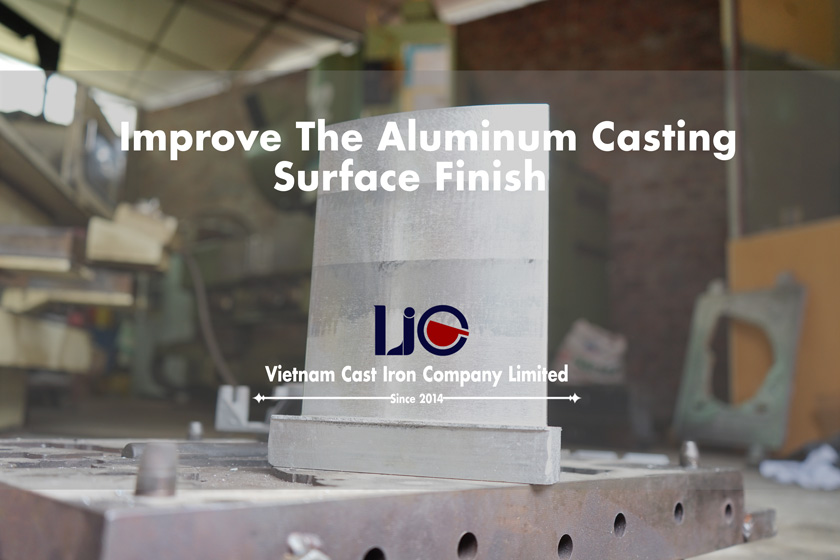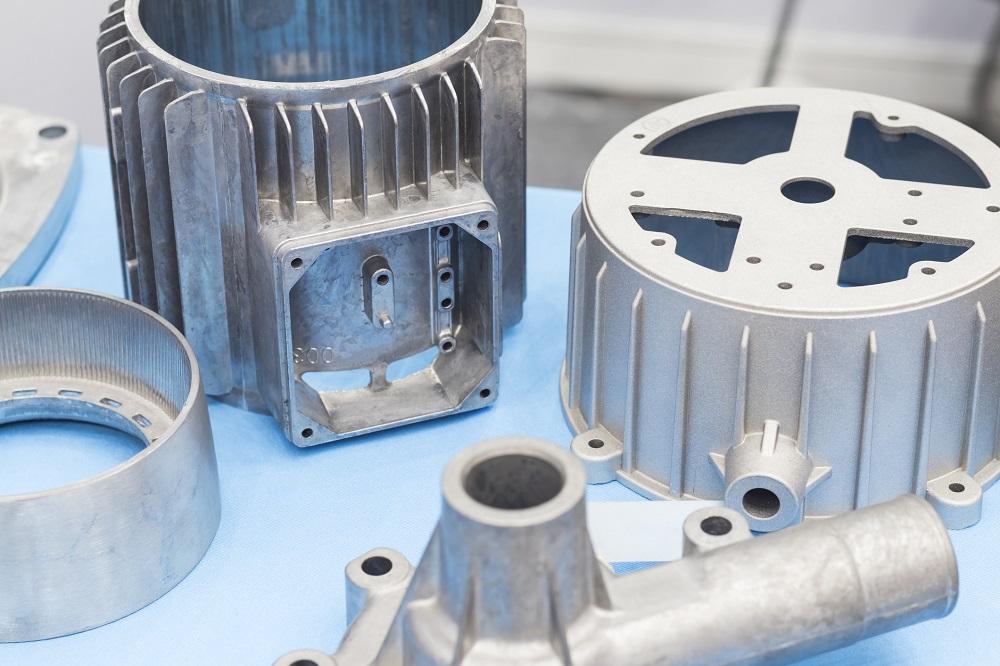The engineering principles behind Aluminum Casting lightweight properties
A Comprehensive Overview to the Various Types and Applications of Aluminum Castings
Aluminum castings are crucial elements in various sectors, known for their light-weight and durable homes. Different casting approaches, such as sand, die, and financial investment casting, offer distinct benefits tailored to certain applications. Recognizing these processes is important for picking the right approach for a project. Each strategy has its unique advantages, influencing style and manufacturing selections. The exploration of these methods discloses a much deeper insight into their influence on modern-day manufacturing.
Overview of Aluminum Castings
Aluminum castings are essential parts in various markets, known for their light-weight and corrosion-resistant properties. These castings are created through processes that permit complex designs and high dimensional accuracy. The flexibility of aluminum makes it an optimal option for a range of applications, from automotive components to customer electronics. Due to its exceptional thermal and electrical conductivity, aluminum is likewise favored in electrical real estates and warmth sinks. Aluminum castings can be treated with different surface area finishes, enhancing their aesthetic appeal and resilience. The product's recyclability contributes to its sustainability qualifications, making it an eco-friendly alternative. Additionally, the accessibility of different aluminum alloys allows makers to customize the mechanical buildings to specific needs, providing boosted strength or improved resistance to use. Overall, aluminum castings play a considerable role in modern manufacturing, contributing to the performance and efficiency of countless products throughout varied markets.
Sand Casting: Refine and Applications
While numerous casting methods exist, sand casting stays one of the most widely used techniques as a result of its simpleness and flexibility. This procedure involves producing a mold from a combination of sand and a binding representative, permitting the manufacturing of complex shapes with high dimensional accuracy. The aluminum is thawed and put right into the mold, where it takes the wanted form as it cools and strengthens.
Sand casting is specifically effective for producing large components and low to medium quantity runs, making it appropriate for different markets, consisting of auto, aerospace, and durable goods. Its convenience enables the casting of elaborate designs, fitting varied specs. Furthermore, sand molds can be recycled multiple times, improving cost-effectiveness. The convenience of sourcing products and the relatively low setup costs even more add to its widespread fostering. Generally, sand casting plays a pivotal function in the aluminum casting landscape, promoting development and efficiency.
Die Casting: Advantages and Makes use of
Die casting deals a number of benefits that make it a favored technique for generating aluminum parts in different sectors. This process permits for high-volume production with phenomenal dimensional precision and surface area finish. The rapid solidification of aluminum during die casting causes a solid and durable product, decreasing the demand for extensive machining or finishing procedures.
Additionally, pass away casting makes it possible for the manufacturing of complex shapes and intricate layouts, which can be testing to achieve with various other casting approaches. The reliable use products reduces waste, making it a cost-efficient option for suppliers.
Applications of die casting span various industries, including auto, aerospace, and customer electronics, where light-weight and high-strength elements are important. Overall, pass away casting stands apart for its ability to provide top quality, performance, and versatility in aluminum element production, strengthening its function in contemporary production practices.
Financial Investment Casting: Accuracy and Detail
Financial investment casting is a precision production process that enables for intricate layouts and in-depth features in aluminum components (Aluminum Casting). This approach supplies many advantages, consisting of high dimensional precision and a smooth surface area finish. Its convenience makes it appropriate across different industries, from aerospace to clinical devices
Refine Overview
The investment casting procedure stands out for its capacity to create elaborate aluminum components with remarkable precision and detail. This technique begins with producing a wax or polymer pattern that is a replica of the desired component. Next off, the pattern is covered with a ceramic covering, which is then heated up to solidify. When the covering is set, the wax is dissolved, leaving a cavity in the shell. Liquid aluminum is poured into this tooth cavity, loading it to create the final component. After cooling, the ceramic covering is broken away, exposing the actors part. This process enables for complex geometries and fine surface coatings, making it appropriate for numerous applications, from aerospace to vehicle sectors.
Benefits of Investment Casting
One of the key benefits of investment casting depends on its ability to provide high-precision components with intricate information. This technique enables the development of intricate geometries that are usually unattainable through various other casting techniques. Financial investment casting minimizes the need for comprehensive machining, reducing product waste and manufacturing time. In addition, it enables making use of numerous aluminum alloys, enhancing the versatility of the end product. The process is defined by a smooth surface area coating, which can cause boosted functionality and visual appeals. Moreover, financial investment casting is appropriate for both little and large production runs, suiting a vast array of industries. Overall, its precision and performance make investment casting a recommended Going Here option for making elements needing specific requirements.
Applications in Sector
While different casting methods offer particular purposes, investment casting stands apart for its extensive applications throughout several markets due to its unmatched precision and information. This method is particularly preferred in aerospace and automobile fields, where detailed components need precise requirements for safety and security and performance. Investment casting enables the manufacturing of intricate forms, such as generator blades and engine components, that typical methods can not achieve. Additionally, medical device suppliers utilize financial investment casting for developing very comprehensive instruments and implants, making sure biocompatibility and functionality. The electric and electronic devices industries also profit, creating parts like real estates and adapters that require fine resistances. In general, financial investment casting's versatility and accuracy make it an essential process in contemporary manufacturing throughout varied fields.
Contrast of Casting Methods

Sand Casting Advantages
Sand casting offers numerous advantages over other casting approaches, particularly when it concerns adaptability and cost-effectiveness. This method enables the production of complex shapes and huge parts without the requirement for expensive tooling. Additionally, the sand used in this process is conveniently available and affordable, making it an attractive choice for both tiny and large production runs. The capability to reuse sand promotes sustainability and decreases product prices. Sand casting fits a selection of aluminum alloys, enhancing its flexibility for various applications. The procedure is also fairly basic, which adds to shorter lead times and adaptability in production. These variables make sand casting a preferred option for numerous markets seeking dependable and affordable solutions.
Die Casting Efficiency
Although various casting methods are readily available, pass away casting stands apart for its performance, especially in high-volume manufacturing circumstances. This technique uses high-pressure pressures to inject liquified aluminum into a mold and mildew, leading to fast cycle times and regular product quality. Contrasted to sand casting and financial investment casting, pass away casting significantly reduces product waste and permits for complex layouts with limited tolerances. The capability to produce big quantities of parts promptly makes it perfect for sectors such as automobile and durable goods. In enhancement, die casting can facilitate using more economical alloys, additionally enhancing its cost-effectiveness. In general, the performance of die casting makes it a favored selection for suppliers aiming to optimize both production rate and quality.
Financial Investment Casting Precision
Investment casting is widely recognized for its extraordinary precision in creating intricate shapes and elaborate information. This technique entails developing a wax pattern, which is coated in a ceramic shell, and consequently disappeared, leaving a specific dental caries for liquified aluminum. Compared to other casting approaches, such as sand casting or die casting, investment casting offers tighter tolerances and a smoother surface area finish. This accuracy makes it suitable for applications requiring high accuracy, such as aerospace and clinical gadget elements. While the initial setup prices might be greater, the long-term benefits include lowered machining needs and regular quality. Investment casting stands out as a favored selection for complex layouts and requiring requirements in different industries.
Market Applications of Aluminum Castings
Aluminum castings play a crucial duty across various industries as a result of their lightweight, corrosion-resistant buildings and superb strength-to-weight proportion. In the auto sector, aluminum castings are thoroughly used for engine components, transmission housings, and structural parts, adding to sustain performance and efficiency. The aerospace market gain from aluminum castings in airplane frameworks, engine installs, and indoor installations, where weight click for more info reduction is essential.
On top of that, the customer electronic devices market makes use of aluminum castings for rooms and components, enhancing toughness while preserving a sleek aesthetic. In the building and construction industry, aluminum castings are employed in building components, window frames, and architectural supports, giving strength against weathering. The aquatic industry prefers aluminum castings her comment is here for boat hulls and fittings due to their resistance to saltwater corrosion. On the whole, aluminum castings supply flexible services, satisfying diverse needs throughout different applications while keeping high performance and integrity.

Future Fads in Aluminum Casting Modern Technology
As markets remain to evolve, developments in aluminum casting innovation are positioned to improve making procedures and item layout. Emerging fads include the integration of automation and expert system, simplifying production and boosting top quality control. 3D printing is likewise obtaining traction, enabling for a lot more intricate geometries and reduced waste, thus advertising sustainability. In addition, the growth of high-performance alloys is increasing the applications of aluminum castings, allowing markets to satisfy strenuous performance requirements.
Another considerable pattern is the boosting emphasis on recycling and the round economic climate, with innovations intended at recycling aluminum scrap successfully. Sector players are likewise buying clever production methods, including IoT for real-time tracking and predictive maintenance. Lastly, advancements in surface area treatment innovations are boosting the durability and aesthetic allure of aluminum castings. Collectively, these fads signify a transformative duration in aluminum casting, driving performance, sustainability, and development across different industries.
Frequently Asked Inquiries
What Are the Ecological Impacts of Aluminum Casting Processes?
The environmental effects of aluminum casting processes consist of greenhouse gas discharges, energy consumption, and waste generation. These variables add to air and water pollution, triggering the requirement for lasting techniques and improved source management in the sector.
How Can Aluminum Castings Be Recycled Efficiently?
Effective recycling of aluminum castings involves collecting scrap, removing pollutants, and thawing the aluminum to generate brand-new castings. This procedure conserves power, lowers waste, and reduces ecological impacts, advertising an extra lasting manufacturing cycle.
What Is the Normal Life Expectancy of Aluminum Castings?
The common life-span of aluminum castings differs substantially, typically lasting between 20 to 50 years depending on ecological factors, alloy composition, and application. Their toughness makes them appropriate for numerous requiring industrial and structural usages.
Are There Any Kind Of Health Risks Connected With Aluminum Casting?
Problems regarding health and wellness dangers related to aluminum casting consist of prospective direct exposure to fumes and dirt. Long term inhalation may lead to breathing problems, while skin get in touch with can trigger irritation. Appropriate precaution are vital to mitigate these threats.
Just How Do Aluminum Castings Compare to Other Products in Strength?
Aluminum castings display a favorable strength-to-weight proportion compared to numerous products, including steel and plastics (Aluminum Casting). They are lightweight yet strong, making them perfect for applications requiring toughness without extreme weight, such as automobile and aerospace elements